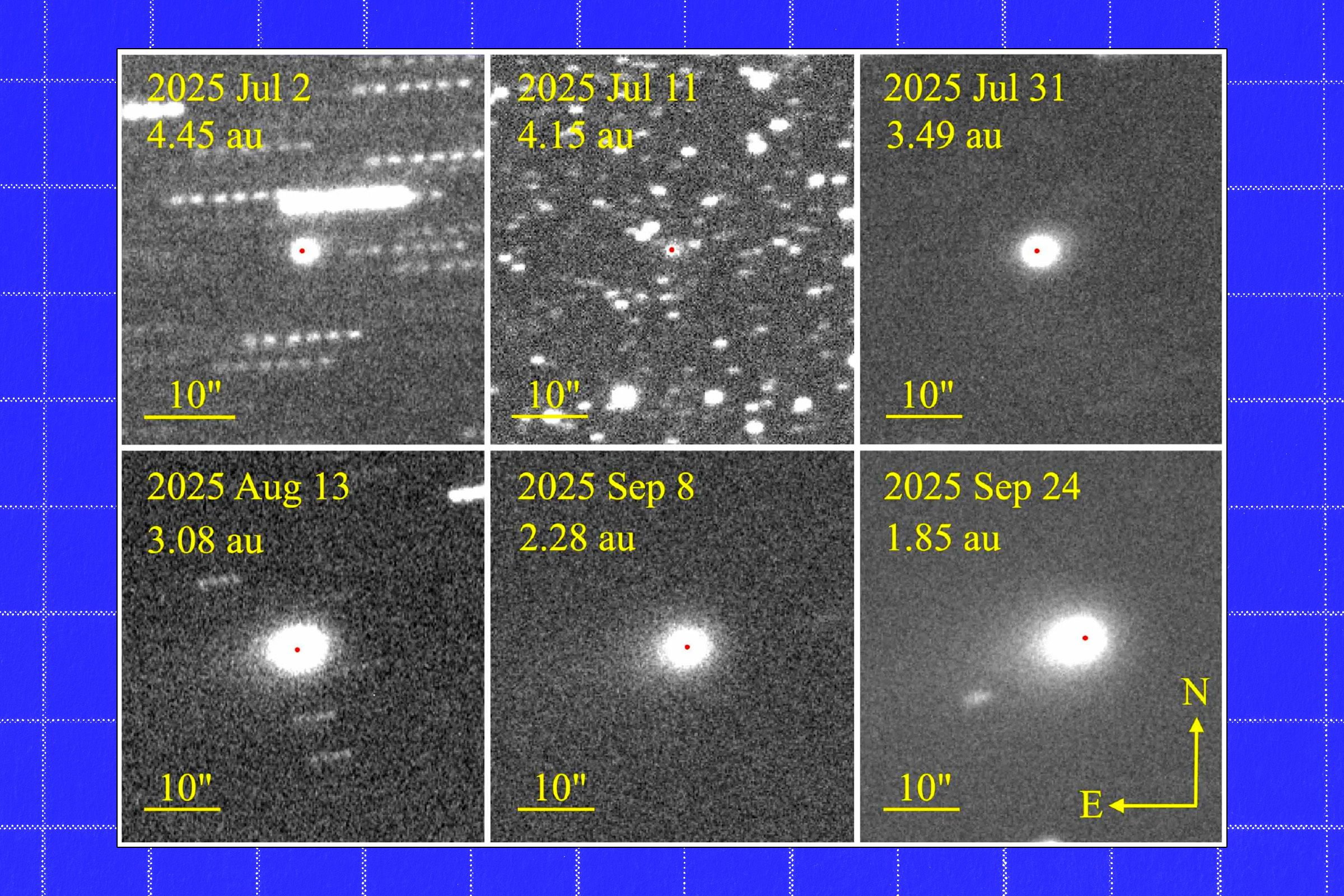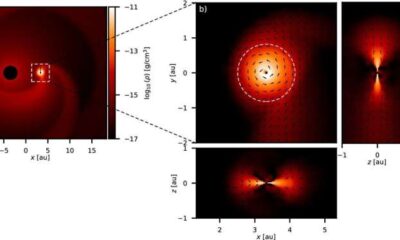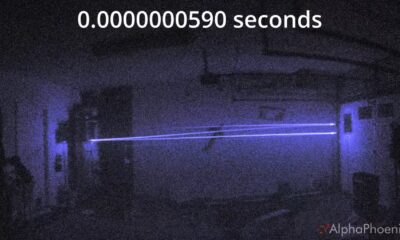Science
Interstellar Object 3I-ATLAS Raises Questions Over Possible Alien Maneuvers

A recently discovered interstellar object, designated 3I-ATLAS, is capturing the attention of astronomers and sparking debate about its origins and behavior. First observed in early July 2023, this object is believed to be the third known interstellar entity to enter our solar system. While many scientists classify it as an interstellar comet, some, including the controversial researcher Avi Loeb from Harvard University, speculate it could be a craft from an alien civilization.
Currently, 3I-ATLAS is obscured by the Sun, making it unobservable from Earth for an extended period. Astronomers expect it to remain hidden until at least December 19, 2023. Despite this, recent images from the Nordic Optical Telescope in the Canary Islands have provided intriguing insights.
Unusual Observations Spark Speculation
The latest observations reveal a peculiar change in the object’s behavior. As it approached the Sun, 3I-ATLAS developed a “tail” of debris, which has now seemingly reversed direction, creating what astronomers refer to as an “anti-tail.” This phenomenon is not uncommon among comets; it occurs due to the Sun’s gravitational influence and the observer’s relative position in space, creating an optical illusion of the debris trail flipping.
Loeb, however, proposes an alternative explanation. In a recent blog post, he suggests that the anti-tail might indicate an alien spacecraft applying “braking thrust” as it navigates through our solar system. He argues that if 3I-ATLAS is indeed an extraterrestrial vessel, the transition from anti-tail to tail would be expected as it nears its closest point to the Sun, known as perihelion.
Potential Implications of Controlled Maneuvering
Loeb continues to assert that this transition could represent a technosignature, a sign of intelligent control or maneuvering. He references a theory shared by his colleague Adam Hibberd from the Institute for Interstellar Studies, suggesting that such behavior could indicate an intention to achieve a stable orbit between the orbits of Mars and Jupiter.
Despite the excitement surrounding these theories, the scientific community remains divided. Many experts dismiss the idea of 3I-ATLAS being an alien craft, reiterating the more conventional view that it is a natural object moving through space. As the object is not expected to reappear until mid-December, the astronomical community will have to wait for more data to draw any definitive conclusions regarding its nature and behavior.
In the interim, the discussions surrounding 3I-ATLAS highlight the ongoing fascination with interstellar objects and the quest to understand our universe better. Whether it proves to be an inert comet or something more extraordinary, the anticipation builds for the day when this enigmatic visitor reveals its secrets.
-

 Science2 months ago
Science2 months agoOhio State Study Uncovers Brain Connectivity and Function Links
-

 Politics2 months ago
Politics2 months agoHamas Chief Stresses Disarmament Tied to Occupation’s End
-

 Science1 month ago
Science1 month agoUniversity of Hawaiʻi Joins $25.6M AI Project for Disaster Monitoring
-

 Science4 weeks ago
Science4 weeks agoALMA Discovers Companion Orbiting Giant Star π 1 Gruis
-

 Entertainment2 months ago
Entertainment2 months agoMegan Thee Stallion Exposes Alleged Online Attack by Bots
-

 Science2 months ago
Science2 months agoResearchers Challenge 200-Year-Old Physics Principle with Atomic Engines
-

 Entertainment2 months ago
Entertainment2 months agoPaloma Elsesser Shines at LA Event with Iconic Slicked-Back Bun
-

 World1 month ago
World1 month agoFDA Unveils Plan to Cut Drug Prices and Boost Biosimilars
-

 Business2 months ago
Business2 months agoMotley Fool Wealth Management Reduces Medtronic Holdings by 14.7%
-

 Science2 months ago
Science2 months agoInnovator Captures Light at 2 Billion Frames Per Second
-

 Top Stories2 months ago
Top Stories2 months agoFederal Agents Detain Driver in Addison; Protests Erupt Immediately
-

 Entertainment1 month ago
Entertainment1 month agoBeloved Artist and Community Leader Gloria Rosencrants Passes Away









